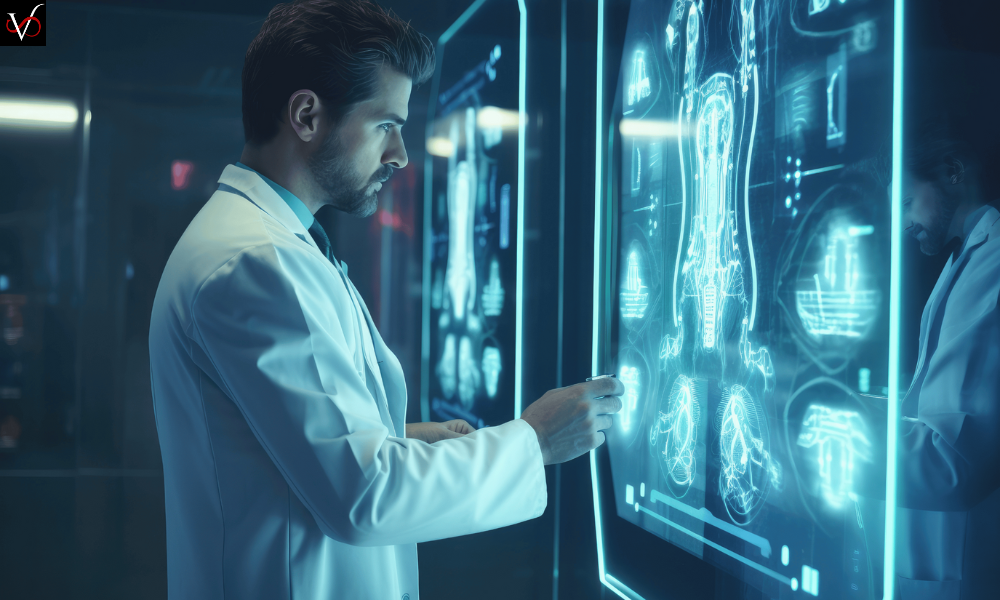Imagine a future where diseases like dementia, cancer, or heart failure could be predicted and prevented years before they show symptoms. That future may be closer than we think—thanks to one of the most ambitious research projects in history: the UK Biobank full-body imaging study. By capturing over one billion high-resolution MRI images from more than 100,000 volunteers, this massive project is revealing how our bodies age, how diseases silently develop, and how we can intervene earlier than ever before.
In traditional medicine, medical imaging is reactive. You get a scan when something feels wrong. But what if full-body scans could detect silent changes long before symptoms appear? That’s the radical shift happening now. This data-rich study is showing that organ aging, fat distribution, and even brain shrinkage can serve as early warning signs for chronic conditions—sometimes decades in advance. In short, we’re entering the era of predictive, proactive healthcare.
Take the brain, for example. MRI scans in the Biobank study have revealed that even in people with no clinical symptoms, subtle brain volume loss in specific regions may point to early signs of Alzheimer’s disease or cognitive decline. What’s even more remarkable is that these changes were measurable as early as midlife, suggesting the potential for much earlier intervention. Interventions like better sleep, mental stimulation, omega-3 intake, and stress management may help delay or prevent progression. These findings are backed by global research efforts, including studies funded by the National Institutes of Health that are investing in early detection biomarkers.
Another compelling insight involves the relationship between heart health and mental health. The UK Biobank data showed that individuals reporting symptoms of anxiety or depression had measurable changes in cardiac tissue and function, even when their traditional heart tests came back normal. This supports a growing scientific consensus that our mental and cardiovascular systems are deeply interconnected—physiologically, not just psychologically. Early detection of these correlations allows for timely interventions like lifestyle changes, therapy, or targeted medications, potentially preventing serious cardiac events down the road.
One of the biggest breakthroughs comes from the analysis of fat distribution. For years, Body Mass Index (BMI) was treated as the gold standard for metabolic health. But full-body MRI scans tell a deeper, more accurate story. The Biobank project showed that two people with identical BMIs could have vastly different health risks depending on where fat is stored. Specifically, visceral fat—the fat surrounding your internal organs—was far more predictive of conditions like type 2 diabetes, non-alcoholic fatty liver disease, and even certain cancers than subcutaneous fat stored under the skin.
This discovery has implications not only for diagnostics but also for public health messaging. It suggests that a “normal weight” individual might still be at risk if their visceral fat levels are high—something only an imaging scan could reveal. That’s a game-changer in the fight against silent metabolic conditions, and it aligns with the latest findings on metabolic syndrome and fat quality.
The Biobank study also enables researchers to estimate biological age—a more meaningful health metric than chronological age. By analyzing data from organs like the liver, heart, and brain, and comparing it across the population, scientists can determine if someone is aging faster or slower than their peers. For example, a 50-year-old could have the cardiovascular profile of a 35-year-old, or, alarmingly, the brain structure of a 65-year-old. This kind of insight makes it possible to create personalized longevity plans: custom fitness routines, dietary shifts, targeted supplements, and stress reduction techniques based on how your body is actually aging—not how many candles are on your birthday cake.
Another feature that makes this project stand out is the combination of imaging, genetics, and lifestyle data. All UK Biobank participants had previously submitted DNA samples, filled out detailed lifestyle and dietary questionnaires, and shared their medical histories. By layering imaging data on top of this, researchers can connect the dots between genetic risk, visible internal changes, and disease outcomes. This kind of dataset is exactly what powers the emerging field of precision medicine—a healthcare approach that tailors prevention and treatment to the individual.
For example, a genetic variant that affects liver fat metabolism might only cause problems in people who eat high-sugar diets. But without a scan, no one would know there’s already visible fibrosis or inflammation. When clinicians and patients have access to these connections, they can act early—sometimes before damage becomes irreversible. This is why institutions like MIT Technology Review are calling full-body scans combined with AI one of the most transformative healthcare trends of the decade.
Despite these enormous benefits, full-body scans are not yet mainstream. Today, they’re mostly used in research settings or high-end executive health programs. The biggest roadblock is cost—MRI scans are expensive and time-consuming. There’s also the issue of “incidental findings,” where something unusual shows up that may not actually be dangerous. These can lead to unnecessary anxiety or overtreatment, which is why experts continue to debate whether whole-body scanning should be offered to the general public.
Then there’s the issue of data privacy and ethical use. The Biobank project collects deeply personal health, imaging, and genetic data. Though it follows strict privacy laws and anonymization standards, there’s always a need for vigilance. As more AI-based diagnostics emerge, the question becomes: who controls your data—and how is it used?
That said, the technological curve is bending fast. AI algorithms trained on Biobank data are already capable of detecting early-stage liver disease, cardiovascular risks, microtumors, and neurodegenerative patterns—sometimes before radiologists can. Over time, these tools will likely reduce scan interpretation costs, making this kind of preventive screening far more accessible.
So what does this mean for individuals today? Even if you don’t have access to a full-body MRI, the principles behind this research are already useful. You can start by managing visceral fat through a fiber-rich diet, resistance training, stress reduction, and quality sleep—all known to reduce internal inflammation. You can also monitor your biological age using consumer health tools like epigenetic test kits or smart wearables that track recovery, heart rate variability, and sleep architecture. These aren’t as detailed as an MRI, but they offer accessible ways to tap into your body’s invisible signals.
This shift also reflects a deeper transformation in medicine itself. We’re moving from a model that waits for disease to strike, to one that uses big data, imaging, and AI to predict it before it happens. That’s a complete rethinking of healthcare—from a system built for sickness to one optimized for sustained wellness. It’s not just about living longer, it’s about staying healthier for longer—and that’s the real promise of longevity science.
In many ways, the UK Biobank imaging study is a blueprint for the future of health. It empowers both individuals and health systems to make smarter, more proactive choices. It connects lifestyle, biology, and technology in a way that serves real people—not just research papers.
As we step deeper into the decade, preventive healthcare powered by AI, imaging, and genomics will no longer be optional—it will be essential. And it all starts with asking the right question—not “What’s wrong with me?” but “What’s silently changing inside me, and what can I do about it?”
✨ Ready to dive deeper?
- Explore how AI is changing diagnostic medicine
- Learn more about visceral fat vs. subcutaneous fat
- Discover the UK Biobank’s imaging data portal
- Read about early detection in preventive medicine (JAMA)







Leave a Reply